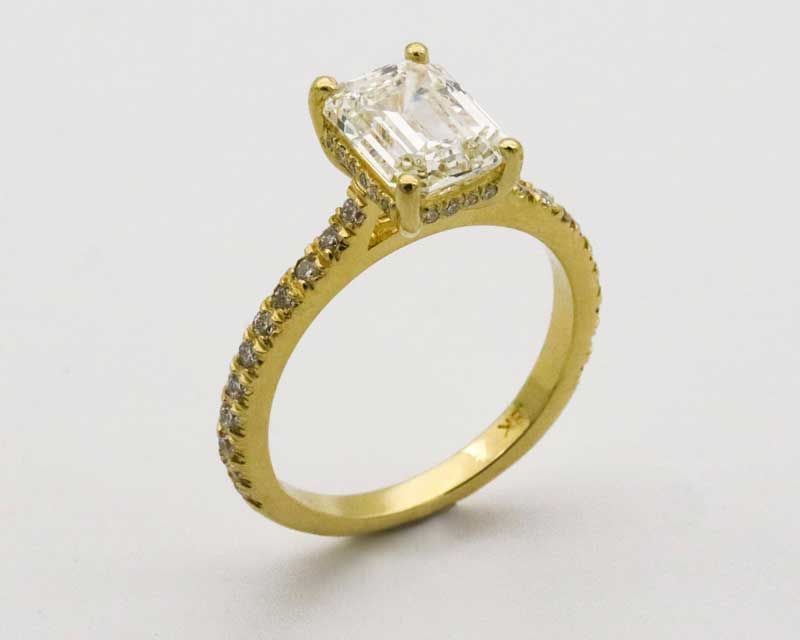Stone Setting Terminology

Basket Setting: Holds a cluster of stones that may or may not surround a larger center stone. The basket look is obtained as the outer prongs of the surrounding stones sweep down to the finger bezel under the cluster.
Bezel Setting: the stone is completely surrounded with a frame of metal
Channel Setting: stones are set between two channels of metal
Gypsy/Flush/Burnished setting: stone or stones set into the metal directly by countersinking into metal and burnishing the edges around the stone
Milgrain: Antique texture applied to edges of jewelry to give it an estate feel.
Nick Setting: Same as Pick Setting. Usually applied to diamond setting: gives the appearance of channel setting however gold is nicked out of the floor or walls of the channel to hold stones in place.
Pave: Stones set close together and held in place by beads (or grains) which cover a surface with a look of paving stones ("pave" in French) or a glittering carpet. Small round faceted stones are usually used in this application.
Pick Setting: See Nick Setting.
Pin Setting: Pave setting with stones further apart and separated by more prongs to give Wall
Prong Setting: Stones are set/secured in a ? wall, ? prong setting.
Pre-set: A prong setting that is obtained as a finding and which has a stone already in place.
Prong Setting: stone or stones set in four to six metal prongs
Tension Setting: Stone is held in place by tension of two pieces of metal.
Tiffany Setting: Plain 4-prong setting for a diamond, primarily used in solitaire rings: developed and originally marketed by Tiffany.
Tube Setting: Metal tubing that secures the girdle of the stone.
V-Setting/Chevron: A V-shaped prong that holds the corners of stones, such as marquise or squares.
